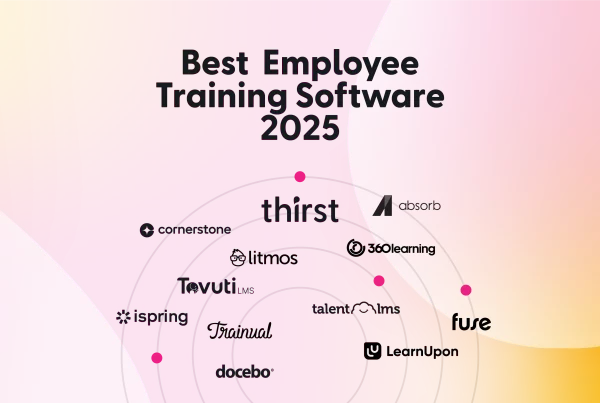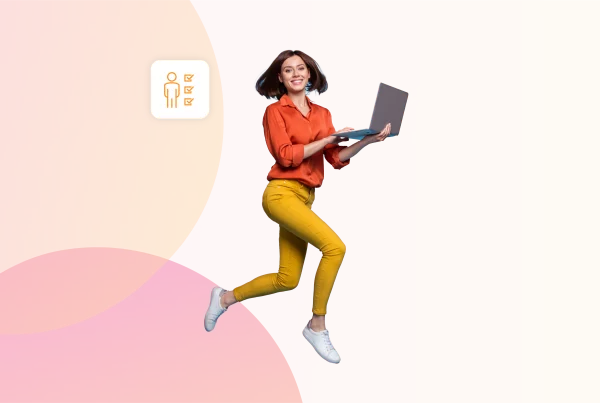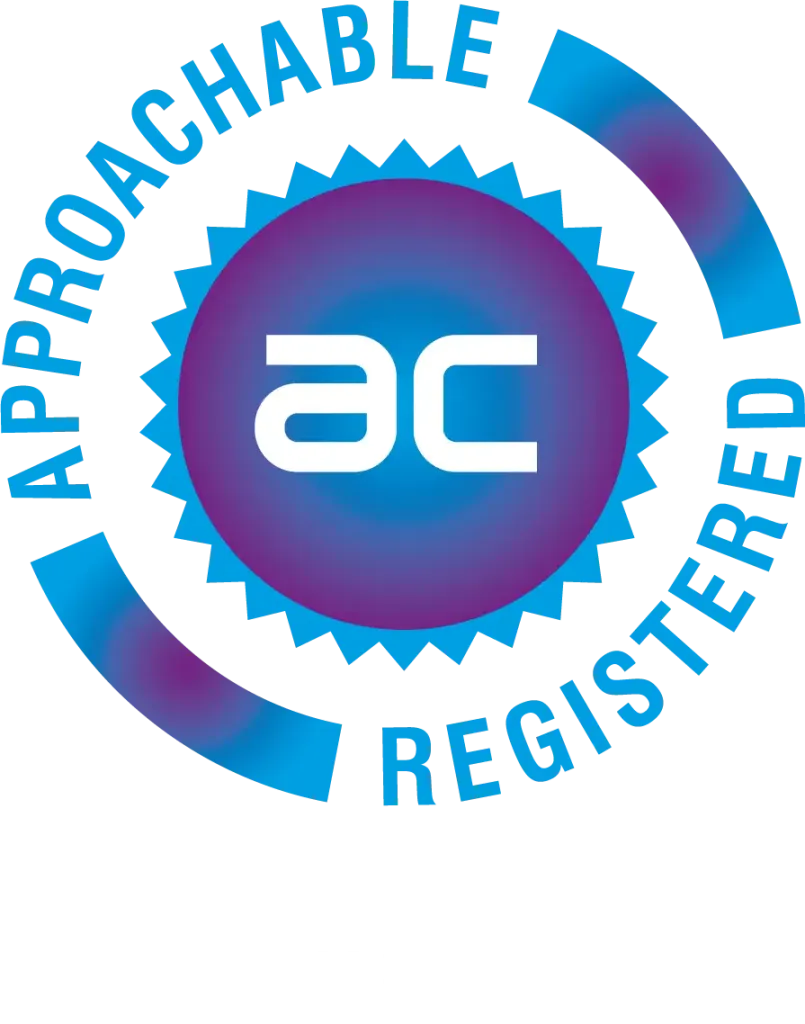Adults don’t learn the same way children do.
Children are like sponges. 🧽
They soak up the world around them from an early age and retain massive amounts of information.
But why is this?
Experts believe they’ve cracked the code. Children learn faster because they:
- Invest time in the learning process
- Don’t fear making mistakes
- Focus their energy on the learning process
- Don’t overthink things
- Make learning fun and enjoyable
But there’s more.
If you want to get academic and neurological about it, children have developing pre-frontal cortices. This ‘elasticity’ gives them learning flexibility, which helps them learn something new quicker.
But don’t take our word for it.
A leading U.S. university, Brown, published an article in 2022 on this very subject. They found that the secret to rapidly processing ABCs and 123s is GABA.
Now, you’d be forgiven for scratching your head, unsure about what GABA is. So, rather than have us dive headlong into an in-depth scientific synopsis, we’ll be quick.
GABA is the abbreviation for the neurotransmitter aminobutyric acid.
The study found a rapid increase in GABA during children’s learning. GABA stabilises neural networks, so any subsequent learning doesn’t override what’s already there, while defending knowledge against retrograde interference.
Basically, they have a greater capacity for learning and retaining information.
This is the first time that solid neuroscientific evidence has been presented that explains why children learn more efficiently than adults.
Definition of adult learning theory
We don’t know for sure how each individual person learns. It’s a question that scientists, psychologists, and philosophers have pondered for centuries, many with similar or contrasting theories. 🤔
What we do know is that the way children and adults learn is different. It’s all about maturity, the behaviours children and adults are receptive to, and existing knowledge.
Have a quick look at the table below for a basic outline that explains how adult and child learning is different.
| Children | Adults |
| Child-oriented learning provides basic foundational knowledge and promotes critical thinking skills.
|
Adults seek out continuous learning based on personal interests, wants and needs. They also have an existing knowledge base as a foundation that learning may allow them to build upon. |
| Younger learners typically have no choice but to study and can lose enthusiasm if they’re not engaged with what they’re being taught. | Adult learners tend to have elevated motivations because their motivation to learn to achieve a goal tends to be greater than those of a child. |
| Teachers are the authority in the classroom environment. | It’s more beneficial to let adults work out problems and organise themselves. |
| Teachers play a central role in delivering knowledge and guiding learning principals through a curriculum. | The role of a ‘teacher’ can be effectively filled by a coach, training facilitator or subject matter expert. |
As you’ll no doubt be able to infer from the table above, adults tend to have certain “learning barriers” that can impact their readiness to learn and their ability to grow their skills. Children, on the whole, are less likely to suffer from the same barriers.
These learning barriers are:👇 👇👇
Focusing: adults have more distractions and priorities. They juggle work and life commitments, which take up their attention. Work commitments. Home life. Emotional health. Even our iPhones and iPads. Children have less on their plates.
The big picture: adults desire to feel valued, especially in a corporate setting. That’s not to say that children don’t want to feel valued, but education is less important to them than, say, being valued by their peers. L&D is vital to stimulating business performance and growth.
Having a purpose: Adults want to know the outcome of any L&D action. It’s the what’s in it for me? scenario. If training doesn’t offer immediate benefits, or at least some benefits down the line, they’ll be less likely to invest any significant time in it.
Imposter syndrome: adults can fear that not knowing something will hinder their job security or career progression. Motivation to learn can also be hindered by ego or the fear of criticism.
How adults learn is different from how children learn. If you want to maximise your L&D, it’s important that you design L&D programmes that adults are receptive to.
Why is adult learning important?
Until World War II, teachers didn’t have any teaching methods oriented around adult learning. But adults still wanted to learn new skills and gain more knowledge.
Adult brains are different from children’s brains. It may be stating the obvious, but they are. Adults think with their prefrontal cortex, the rational part of the brain. The prefrontal cortex focuses on judgement and an awareness of long-term consequences.
Children process information with the amygdala, the emotional part of the brain, which is still developing. This is why children cannot always explain what they’re thinking as opposed to what they’re feeling.
So, because adults are socially, psychologically, and neurologically different from children, they cannot learn using the same approach, especially in a working environment. This is true from the onboarding process onward.
Therefore, designing a learning matrix that caters specifically to adults is paramount to ensuring that adults are able to learn effectively. 👍
What is Knowles’ Adult Learning Theory?
Adult learning theory is a guiding set of principles that explain how adults learn in contrast to children.
These principles can be applied in any adult learning environment, including education and corporate settings.
The theory was developed in 1968 by Malcolm Knowles, a prolific American educator well-known for popularising the term andragogy (which we’ll go into a bit more detail about below).
Knowles spent his career theorising how older people approach learning in a way that’s unique compared to children. From this, he developed five assumptions about adult learners.
Five key assumptions about adult learners
To understand why your business should promote adult learning across your L&D programmes, you must first understand the five key assumptions of adult learners.
These are as follows:
Self-concept: adults become more self-directed as they mature
Knowles believed that adults become more independent and self-directed as they move through life. Sounds simple and obvious, right? 💡
Adult learners will want ownership of their own learning journey.
This is one of the reasons why learning experience platforms (LXP) and the proliferation of eLearning have become so valuable to organisations.
When you give adult learners the autonomy to choose their learning paths or how they receive information, they’re more likely to be receptive and engaged. 💡
Learner experience: adults bring their own experience to the learning process
The second assumption Malcolm Knowles makes is about the learner’s experience.
Adults will likely bring a rich history of education, working lives, and life experiences to the learning process… Children don’t have this.
Remember, even if the concepts and skills you’re bringing to the learning process are new, adults have references to enrich their own learning. Finding ways to integrate this into discussions will allow adults to get the most from their learning experiences. 💡
A willingness to learn: adults want to learn new skills that help them accomplish tasks
Adults care about why they’re learning something.
This means that they’re willing and ready to learn. Children tend to absorb everything. Adults are more selective about what knowledge they want to acquire.
This is why the pivotal part of any e-learning process is the planning stage. Make it clear what adults will take away from the course and why it matters, and you’ll get them on board. 💡
Orientation to learning: adults want to solve problems, not learn concepts
Generally, adults are less interested in subject-based learning, which centres around acquiring the knowledge to understand a concept, and more in problem-based learning, which centres around knowledge that tangibly contributes to problem-solving.
Scenario-based learning can also be very helpful for adults, teaching them to perform better in their roles and avoid making any costly mistakes. 💡
Motivation to learn: adults rely on internal as opposed to external motivations
The last assumption Knowles makes is that adults are motivated by internal motivations, like money and influence, that are distinct to that individual. Children are more focused on external motivations, such as their teacher’s grades or parental pressure.
To motivate colleagues to learn, organisations should emphasise the prospect of a promotion or financial reward, even the chance to have greater decision-making power.
Don’t forget, organisations that invest in understanding the core motivators of their employees will be able to better shape the L&D process. 💡
What is andragogy?
Simply put, andragogy is the method and principle of adult learning. It’s based on a humanistic conception of self-directed, autonomous learners, where teachers are described as the facilitators of learning. And is true of all stages of learning in a commercial environment, from onboarding onwards.
Andragogy states that adults:
- favour directing their own learning
- Leverage their own knowledge and experience as a learning aid
- Will be engaged when the material is of direct or immediate relevance to their goals
- Wants to be able to apply new information immediately to solve problems
- Needs to have a say in the planning and execution of their learning experience
This means that andragogy is better suited to those who are strongly self-motivated or working within a goal-oriented and structured programme or teaching that solves specific problems.
For andragogy to be successful, organisations should create a space that welcomes collaboration, complete with materials that are relevant to the learner’s needs.
Teachers should demonstrate why the programme is important using real-world examples that explain how the concept is valuable to learners.
This is most effective when learning is completed by performing actions, like, for instance, completing tasks, as opposed to repetition and memorization.
Key tactics to foster engagement and promote success include engaging learners, enabling autonomy, encouraging self-evaluation and critical reflection, igniting creativity, not entirely focusing on practical exercises, leveraging storytelling, and sharing inspiring successes. 🔥 🔥
Adult learning theories and examples
Andragogy aside, there are several other adult learning theories that organisations have employed to gain insight into what motivates adults to learn and use the knowledge as building blocks to develop organisational finesse.
These include:
Transformational learning: this attempts to transform a learner’s frame of reference through a process of problem-solving, processes, and self-reflection.
Learning transformations occur when individuals face a “disorienting dilemma” that challenges existing beliefs and promotes critical reflection.
Transformational learning is considered one of the most effective adult learning theories because it shifts an individual’s perspective on how they behave, interact, or solve problems. 💡
Experimental learning requires a hands-on approach, putting the learner at the centre of the learning experience. Active participation is paramount; however, theory has demonstrated that learning is heightened when an individual reflects on what they are doing.
There are four elements to experimental learning: active involvement, reflection upon practise, conceptualization of the experience, and use of knowledge gained upon completing the experience. 💡
Self-directed learning is a process where learners take the initiative to diagnose their own learning needs, form their own goals, identify resources, implement a learning plan, and assess their own results.
The input of teachers, mentors, and peers is essential to the process; however, learners are responsible for selecting and accessing their own learning plans. Learners also have full autonomy over their learning decisions. 💡
Project-based learning asks learners to solicit feedback and continually review outcomes. The repetitive nature of project-based learning is thought to increase long-term retention when learning a new skill or acquiring knowledge.
Using diverse skills, including inquiry, problem-solving, collaboration, and communication.
Action learning: uses actions to improve problem-solving processes and simplify the resulting solutions. This approach tackles problems first by asking questions to clarify them, reflecting, and identifying possible solutions. Only then can action be taken.
Questions foster group cohesiveness, encourage dialogue between groups, develop innovative thinking, and improve results.
Action learning requires groups to “act” to find solutions to problems they’re working on. If learners make recommendations, the group loses its identity, creativity, and commitment.
A coach should be assigned to the group to promote efficient learning. 💡
Use adult learning theory to improve L&D
Adult learning theory can guide L&D professionals by connecting learning experiences to existing knowledge.
It should therefore come as no surprise that adult learning theory continues to be extensively used in the design and development of organisational training programmes.
By incorporating personal context and partnering it with existing knowledge and experience, adult learning theory can help organisations maximise L&D success.
Close any knowledge and skill gaps with Thirst
The Thirst AI-powered learning platform empowers L&D professionals to accelerate their learning culture, talent acquisition, leadership development, and internal mobility. It’s your chance to close your skills gap—fast. 🙂
Interested in learning more? Book a demo today. 👍
For more e-learning insights, resources and information, discover the Thirst blog.
You may also enjoy:
What Is a Learning Needs Analysis? [+ Free Template] | What Is Social Learning Theory, and Why Is It Important? | What Is Skills Mapping? (An Intro Guide)







